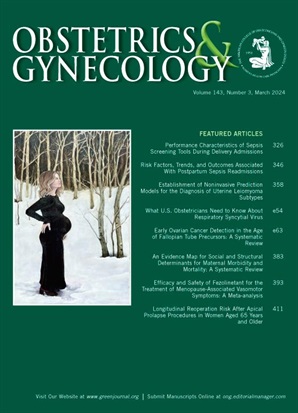12 Steps Toward Sustainability in Gynecologic Surgery.
IF 4.7
2区 医学
Q1 OBSTETRICS & GYNECOLOGY
引用次数: 0
Abstract
Surgery is a major driver of climate change due to carbon emissions. Single-use materials and tools account for the largest environmental effects. In this Video 1, we present 12 strategies to promote sustainability in the gynecology operating room, with a focus on minimizing single-use, disposable products: 1) reduce glove changes, 2) custom surgical packs, 3) reusable scrub caps, 4) avoid disposable energy devices, 5) stainless steel manipulators, 6) reusable suction irrigators, 7) alternatives to specimen-retrieval bags, 8) minimize single-use plastic trocars, 9) avoid advanced access platforms, 10) make the most of every suture, 11) use a laparoscope for cystoscopy, and 12) minimize red bag waste. Throughout the video, we present data to support our recommendations. Each of these strategies represents a small step, but, added together, they can make a big difference in our environmental effect as surgeons. A toolkit with additional resources is available in Appendix 1, available online at http://links.lww.com/AOG/E234.迈向妇科外科可持续性的12个步骤。
由于碳排放,手术是气候变化的主要驱动因素。一次性使用的材料和工具对环境的影响最大。在这个视频1中,我们提出了促进妇科手术室可持续发展的12个策略,重点是尽量减少一次性使用的产品:1)减少更换手套,2)定制手术包,3)可重复使用的手术帽,4)避免使用一次性能源装置,5)不锈钢操作器,6)可重复使用的吸引冲洗器,7)标本检索袋的替代品,8)减少使用一次性塑料套管针,9)避免先进的存取平台,10)充分利用每次缝合,11)使用腹腔镜进行膀胱镜检查,12)减少红色袋子的浪费。在整个视频中,我们提供了数据来支持我们的建议。这些策略中的每一个都是一小步,但是,加在一起,它们可以对我们作为外科医生的环境影响产生很大的影响。附录1中提供了一个带有额外资源的工具包,可在http://links.lww.com/AOG/E234上在线获得。
本文章由计算机程序翻译,如有差异,请以英文原文为准。
求助全文
约1分钟内获得全文
求助全文
来源期刊

Obstetrics and gynecology
医学-妇产科学
CiteScore
11.10
自引率
4.20%
发文量
867
审稿时长
1 months
期刊介绍:
"Obstetrics & Gynecology," affectionately known as "The Green Journal," is the official publication of the American College of Obstetricians and Gynecologists (ACOG). Since its inception in 1953, the journal has been dedicated to advancing the clinical practice of obstetrics and gynecology, as well as related fields. The journal's mission is to promote excellence in these areas by publishing a diverse range of articles that cover translational and clinical topics.
"Obstetrics & Gynecology" provides a platform for the dissemination of evidence-based research, clinical guidelines, and expert opinions that are essential for the continuous improvement of women's health care. The journal's content is designed to inform and educate obstetricians, gynecologists, and other healthcare professionals, ensuring that they stay abreast of the latest developments and best practices in their field.
 求助内容:
求助内容: 应助结果提醒方式:
应助结果提醒方式:


